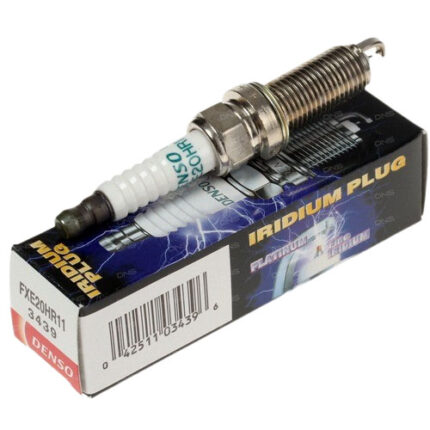-6%
Get Nissan Sylphy Tie Rod End Sub-Assy Set R/L CEN153L in Kenya
The Tie Rod End Sub-Assembly Set (Right-Hand (R) & Left-Hand (L)) is a crucial steering component in your vehicle. It connects the steering rack to the wheels, allowing for smooth and precise control of the car’s direction. Whether you’re driving a Toyota Prado 120/150 or any other vehicle, properly functioning tie rod ends are essential for safety, handling, and tire longevity.
In this detailed guide, we’ll cover the function, importance, symptoms of failure, replacement process, and maintenance tips for the Tie Rod End Sub-Assy Set.
What is a Tie Rod End Sub-Assy?
The Tie Rod End Sub-Assembly consists of two key components:
Outer Tie Rod End – Connects the steering knuckle to the inner tie rod.
Inner Tie Rod – Links the outer tie rod to the steering rack.
Each vehicle has two tie rod assemblies – one for the right-hand (RH) side and one for the left-hand (LH) side. Together, they ensure precise steering and maintain the correct alignment of the front wheels.
Key Features:
Transfers motion from the steering rack to the wheels
Ensures stable and responsive steering
Affects vehicle alignment & tire wear
Made of high-strength metal with a ball joint for movement flexibility
Why Are Tie Rod Ends Important?
The Tie Rod End Sub-Assy plays a critical role in:
Steering Precision – Controls the direction of the wheels.
Vehicle Stability – Ensures smooth and stable handling at different speeds.
Tire Longevity – Keeps the wheels aligned, preventing uneven wear.
Safety – A failing tie rod end can lead to loss of control, posing a severe risk.
If the tie rod end assembly is damaged or worn out, steering responsiveness is compromised, making the vehicle unsafe to drive.
Signs of a Worn-Out Tie Rod End
Over time, tie rod ends experience wear due to friction, road conditions, and exposure to elements. Here are common warning signs:
Loose or Wandering Steering – The vehicle feels unstable or drifts while driving.
Steering Wheel Vibrations – Especially at high speeds or when turning.
Uneven or Rapid Tire Wear – Misalignment due to faulty tie rods causes irregular tread patterns.
Clunking or Knocking Noises – When turning or driving over rough roads.
Difficulty in Steering – Resistance when turning the steering wheel.
If you notice these issues, you should inspect and replace the tie rod end assembly to ensure safe and smooth driving.
Replacement Process
Replacing the Tie Rod End Sub-Assy Set R/L requires mechanical knowledge and the right tools. While some DIY mechanics can handle it, professional alignment is necessary afterward.
Tools Needed
Jack & jack stands
Wrenches & sockets
Tie rod puller or separator
Torque wrench
Wheel alignment tools
Step-by-Step Guide
Lift the Vehicle – Securely jack up the front end and use jack stands.
Remove the Wheel – To access the tie rod assembly.
Loosen the Lock Nut – The nut connects the tie rod to the inner assembly.
Detach the Outer Tie Rod – Use a puller tool to separate it from the steering knuckle.
Remove the Inner Tie Rod – If replacing the full sub-assembly.
Install the New Tie Rod End – Align properly before securing.
Reassemble Everything – Tighten nuts to the recommended torque.
Get a Professional Alignment – Ensures proper handling and tire longevity.
Tip: Mark the position of the old tie rod before removal to approximate alignment.
OEM vs Aftermarket Tie Rod Ends
When replacing Tie Rod End Sub-Assy, you’ll find both OEM (Original Equipment Manufacturer) and Aftermarket options.
OEM Tie Rod Ends:
Designed by the vehicle manufacturer
Perfect fit and factory-quality durability
More expensive but ensures compatibility
Aftermarket Tie Rod Ends:
Available in different materials (hardened steel, reinforced joints)
Some offer better wear resistance for rough terrains
More affordable but quality varies
For Toyota Prado 120/150, OEM tie rods are recommended for daily driving, while reinforced aftermarket versions are great for off-road conditions.
Maintenance & Longevity Tips
To extend the lifespan of your Tie Rod End Sub-Assy Set, follow these simple maintenance steps:
Check for Play in the Steering – Test tie rod movement every 10,000 km.
Keep Suspension Lubricated – Reduces wear on tie rod ball joints.
Avoid Potholes & Rough Roads – Sudden impacts can damage the tie rods.
Inspect Regularly – Check during routine tire rotations or alignments.
Replace in Pairs – If one tie rod is worn out, the other will likely follow soon.
Following these steps will help maintain optimal steering performance and vehicle safety.
Common Questions About Tie Rod Ends
How often should I replace my tie rod ends?
Typically, every 80,000 – 150,000 km, but this varies based on driving conditions.
Can I drive with bad tie rod ends?
No. A worn-out tie rod end can lead to steering failure, making driving extremely dangerous.
What happens if a tie rod end breaks while driving?
The affected wheel will lose steering control, which can result in an accident.
Should I replace inner and outer tie rods together?
It’s recommended, as they wear at a similar rate.
How much does a tie rod end replacement cost?
Prices vary but expect $50 – $200 per tie rod end, plus labor if done at a shop.
Follow us on Facebook for more parts.





Reviews
Clear filtersThere are no reviews yet.